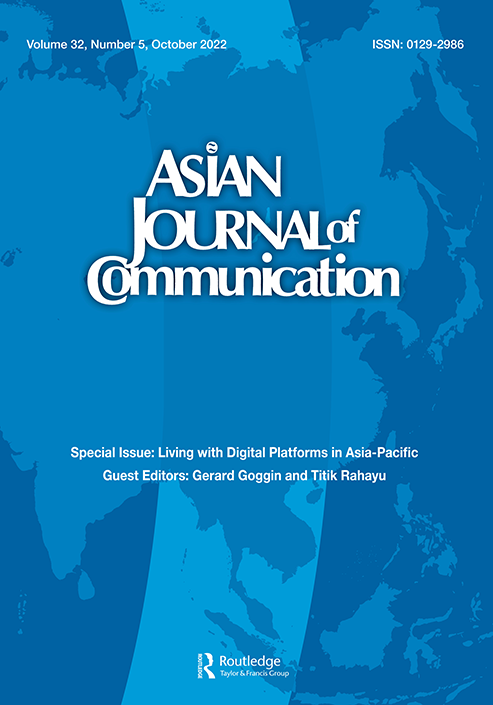Asian Journal of Communication: The voice of communication theory, research, and education in Asia
By Peng Hwa Ang, Editor, Asian Journal of Communication

The Asian Journal of Communication is the flagship journal of AMIC. It was founded in 1990 by Professor Emeritus Eddie Kuo of Nanyang Technological University (NTU) and the late Anura Goonasekera, who was then Head of Research at the Asian Media Research and Information Centre, which later became AMIC.
They were visionary because communication as a field in academia was in its infancy in Asia. Since then, as the field of communication has grown and flourished, so has the journal. Today, it is published by Taylor & Francis and its annual revenue helps support the AMIC secretariat in Manila.
The Journal is jointly owned by NTU and AMIC. My colleague Xiaoming Hao took over as editor from Eddie Kuo in 2010. I was handed the editorship in 2019 when Hao retired. NTU’s support has been and continues to be substantial. Although it is entitled to half the royalties, it has not collected a cent; instead, I am given a course waiver as editor and a doctoral student is assigned as an editorial assistant.
Last year, we received some 450 submissions and this number looks to increase. Unfortunately, we can only publish fewer than 10% of the submissions. The high quality as a result of this filtering is a rising impact factor, currently at 2.074. If the joke about academic writing is that only the author’s mother reads, an IF of more than 2.0 suggests that someone other than the author’s mother is reading the journal. That’s heart-warming.
The rise of the impact factor could be attributable to the pandemic, when we, along with many other quality journals, received more submissions and citations than the year before. But it may also be due to our attempts to promote authors’ works over Facebook and Twitter. Our social media editor, Earvin Cabalquinto (Deakin University), has been instrumental in ensuring that every published article gets due exposure in those platforms.
Many of our authors are junior scholars, which augurs well for Asian communication scholarship. But they also need some handholding. For example, I have taken it on myself to go over manuscripts and edit them for readability.
The Journal continues, in the vision of the founders, to be a voice of Asia in communication. Being a journal oriented to a region, it would be pointless to try to “compete” globally. In fact, I have directed articles from my friends and colleagues to more internationally-focused journals.
So what is the Asian focus of the Asian Journal of Communication? The Journal is focused on theory. That is, submissions must critique, refine or extend theory. Merely confirming a theory is not enough. Using Asia as a test-bed or a source of data to confirm a theory is not enough. There must be contribution to theory and with an Asian connection. This is thought leadership with an Asian perspective.
For example, we have a special issue on anti-Asian racism. Interestingly, the associate editors advised that the guest editors should also include intra-Asian racism, that is racism by an Asian against another Asian.
Also in progress is one on Islamic communication research, led by Indonesian researchers. In Indonesia, academics in Islamic universities are calling the politicians to account. They are using Islamic norms on probity to address such issues as corruption. I thought it was important to bring to larger attention the contribution of our colleagues with a different tradition and background in communication.
The perspectives and approaches in Islamic communication research would, I imagine, be different from those we are familiar with in Western communication research. Such differences reflect the diversity in Asia and can only enrich our understanding of communication.
In the Western convention, many of the articles are quantitative, given the centre of gravity in communication being the US. But I note that many Asian scholars write scholarly essays. I have appointed an associate editor, Terence Lee (Sheridan Institute), to consider such scholarly essays.
In the next issue, I will answer the commonly asked questions of how to get published in the AJC.
